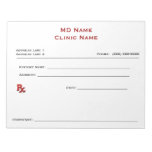Understanding the competition is a crucial business activity for any physician owner. Some practices hire professionals to track competitors and assess the competitive landscape on a regular basis. But it doesn't always have to be a complicated, time-consuming, and expensive process—particularly given the new wealth of data that can be assembled using the internet.
By investing even a small amount of time, physician practices of any size can develop a framework for making competitive assessments, gather intelligence on rivals, and understand how to position their own brand, services, and practice in the community. Not only can you learn best practices from competitors, but you can also learn to avoid the mistakes they make.
I often tell physicians that keeping track of who your competitors are, what patients and referring physicians are saying about them, and what they are saying themselves can help you differentiate your practice and stay ahead of trends that could impact your business. Staying smart on the competitive landscape helps you make very practical decisions around what services you offer, who you hire, what your messaging is, and where you fit in the brand landscape.
Benefits of competitive research
Conducting a competitive assessment should be an ongoing process, one in which you continue to deepen your understanding of the strengths and weaknesses of your competitors. There are a series of business benefits you can gain by having insight into the competitive landscape.
The following are potential business benefits from conducting competitive research:
• Understanding your catchment area (this is the geographical area from which your practice draws patients)
• Better targeting patients
• Forecasting the potential for your catchment area
• Figuring out how local forces (economic and political) impact your specialty and even your catchment area
• Understanding what competitors are offering
• Determining offerings in ancillary services
• Finding new patients.
A competitive analysis is a critical part of the marketing plan for your medical practice. With this evaluation, you can establish what makes your practice unique, and therefore what attributes you play up in order to attract your target market (patients and referring physicians).
Analyzing your catchment area
Evaluate your competitors by placing them in strategic groups according to how directly they compete for a share of the patients within your catchment area. For each competitor, list their providers and services, their estimated profitability, growth pattern, marketing objectives and assumptions, current and past strategies, organizational and cost structure, strengths and weaknesses, and size (in patient volume) of the competitor's business.
Answer questions such as:
• Who are your competitors?
• What services do they offer and/or what equipment do they have?
• What is each competitor's market share?
• What are their past strategies?
• What are their current strategies?
• What types of media are used to market their practice (their physicians, their services, and their equipment)?
• What are each competitor's strengths and weaknesses?
• What potential threats do your competitors pose?
• What potential opportunities do they make available for you?
A quick and easy way to compare your physicians or services with similar ones in your market is to make a competition grid. Down the left side of a piece of paper, write the names the physician groups that compete with yours. To help you generate this list, think of where your patients would go for care if you were not around. Across the top of the paper, list the main features and characteristics of each practice. Include such things as target market, providers, size, relationship with referring physicians, and patient volume. You may also want to list services offered, strength of their marketing efforts, and other features that are relevant.
A glance at the competition grid will help you see where your physician group fits in your particular catchment area.
Impact of properly understanding the competition
Gaps in our knowledge of the competition are a natural and unavoidable characteristic of operating within the healthcare industry. We must remember though that a competent study of the competition can help reduce some of that uncertainty and help pave the way for strategic planning and business operations within your practice.
Physician owners must be keenly aware of what competing practices are doing. Practice management requires a firm focus on the competition; identifying its strengths and vulnerabilities is crucial. Since managing a successful practice requires decision and action based on situational awareness, identification of your competition’s expectations and preparations is important.
Because the healthcare landscape is changing so rapidly, accurate and timely information regarding what competing practices are doing is a prerequisite for success.




















